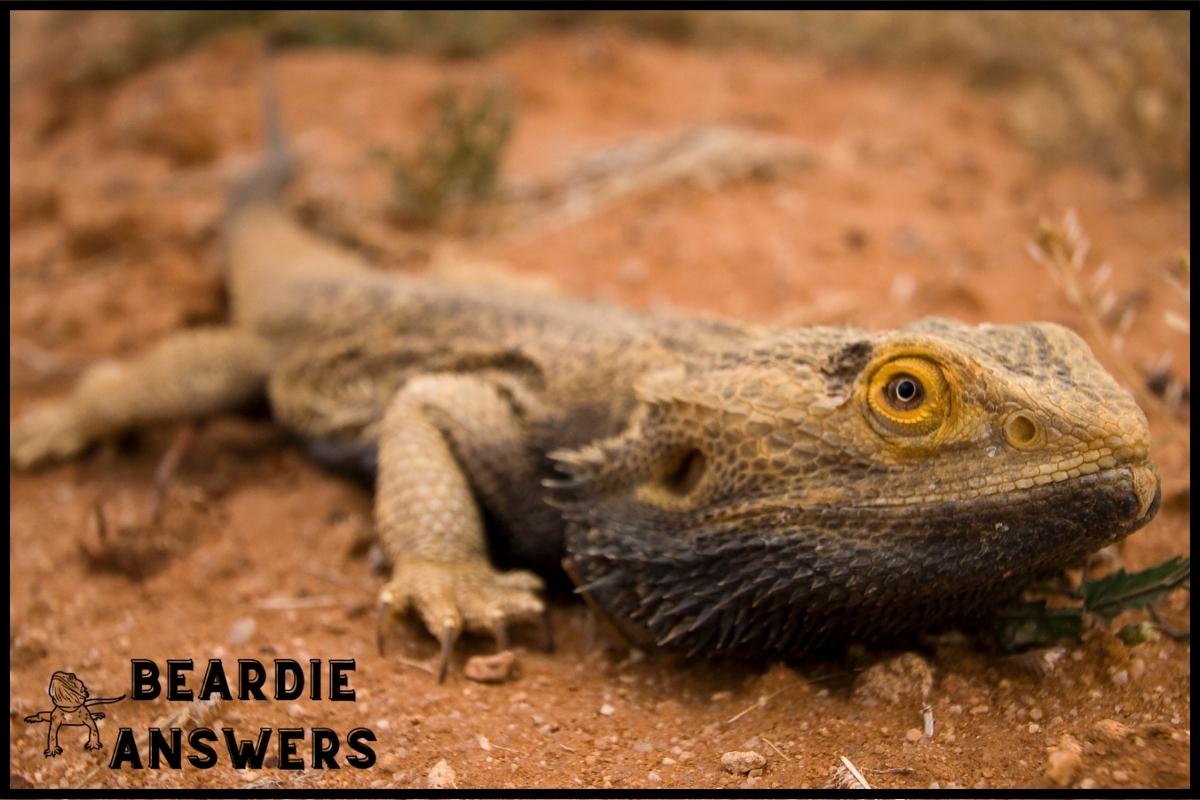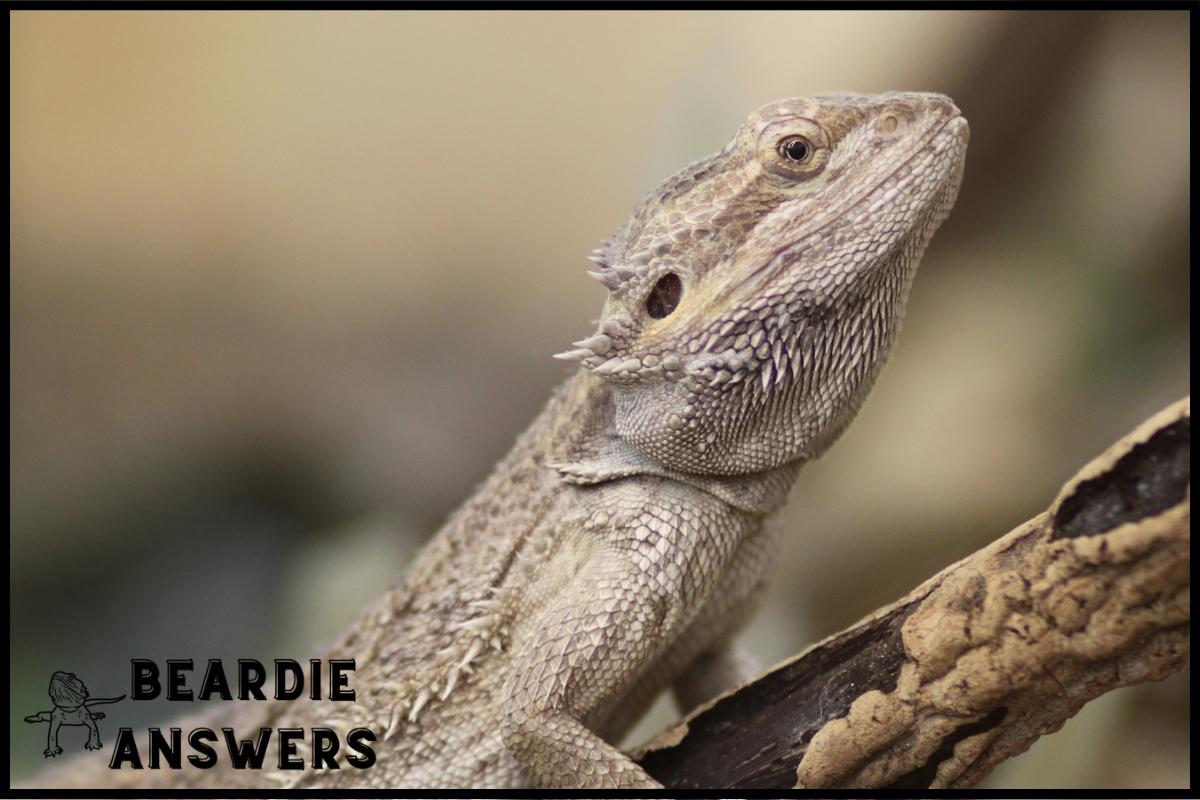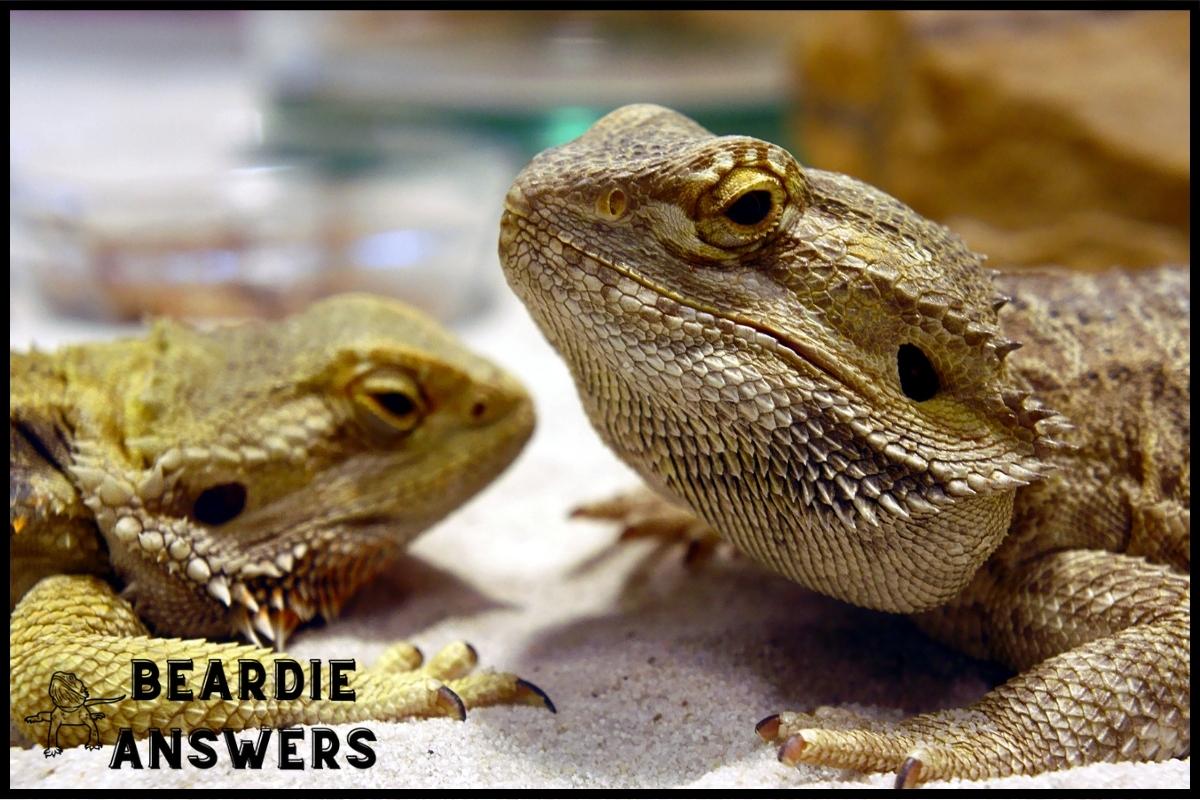Bearded dragons can enjoy being petted if done correctly. They have a docile temperament and enjoy human interaction, but it’s important to approach them gently and avoid touching their sensitive areas such as their tail or belly. Additionally, they may show signs of discomfort or stress such as puffing up their beard or trying to escape if they don’t want to be touched. It’s important to observe their body language and respect their boundaries to ensure a positive interaction.
What You'll Learn
Signs Your Bearded Dragon Enjoys Being Pet
When it comes to bearded dragons, pet owners often wonder if their pet enjoys being petted. After all, these lovable reptiles can be quite shy. Fortunately, there are a few tell-tale signs that can help determine if your bearded dragon is enjoying being petted.
Relaxed Posture
One of the most obvious signs that your bearded dragon is comfortable with being pet is its posture. If your beardie relaxes its body when you come near them, then it is a sign that they enjoy being pet.
No Attempts at Escape
If your beardie does not try to escape when you come close or pick them up, this may be another sign that they enjoy being pet. Your bearded dragon may even move closer to you in anticipation of some loving petting!
Basking
A surefire sign that your bearded dragon is happy to be receiving attention from you is if it begins basking in the sun or on its favorite spot near you while you’re petting it. It’s a clear sign that they appreciate the attention they’re receiving and are quite content.
Leaning Into Your Hand
Another sign of comfort for a bearded dragon is when they lean into your hand as you are petting them. This shows that they are trusting you and may even be enjoying the act of being pet.
Chirping
Bearded dragons will make chirping sounds when they are content and happy. If you hear this noise while petting your dragon, it is likely that they enjoy the attention!
Benefits of Petting Your Bearded Dragon
Petting a bearded dragon can be a great source of companionship and trust between you and your pet. These gentle creatures are known to be friendly and interactive, which makes them excellent pets. Here are some of the benefits of petting your bearded dragon:
Bonding
Petting your bearded dragon can help to build a strong bond between the two of you. Regularly spending time in close proximity with your beardie helps them to get used to your presence, making them more relaxed and trusting. This is especially useful if you’re planning to handle your reptilian friend.
Comfort
It’s no secret that petting can be calming and therapeutic for both animals and humans alike. Stroking your beardie’s back or head can have a calming effect on them, as it helps boost their mood. This is especially helpful during times when they might be feeling stressed or scared.
Improved Health
Not only can petting help to strengthen the bond between you and your beardie, but it can also be beneficial for their overall health. Petting is known to reduce the levels of cortisol, the stress hormone, in their bodies which can help to keep their immune system strong. Additionally, regular physical contact has been linked to improved digestion in dragons, as well as better sleep patterns.
Strengthens Behavior
Petting your beardie can help strengthen their behavior’s as well. As they become more comfortable around you, they may become more willing to explore their environment or interact with other people. This can also help reduce stress levels and make them feel safer in their home environment.
Increases Longevity
Petting your bearded dragon regularly can also increase their lifespan. It helps keep them healthy by providing necessary physical contact which helps stimulate the immune system, digestion, and other vital functions. With proper care and regular petting sessions, your beardie can live a long and healthy life!
Best Areas to Pet Your Bearded Dragon
For those looking to give their pet bearded dragon some extra love, there are a variety of areas that can be petted to provide the best experience. From their head to their tail, here are some of the best areas to pet your bearded dragon:
Head
The head is one of the most common areas to pet your bearded dragon. It’s important to be gentle when petting the head, as this sensitive area has many sensory organs that can react quickly to sudden movements. P
etting the head should be done slowly and lightly, and stopping immediately if your bearded dragon shows signs of discomfort.
Back
The back is another area that can be a great place to pet your bearded dragon. Petting the back with slow, gentle strokes can help your bearded dragon relax and feel more secure in its environment.
Be sure not to apply too much pressure when petting this area, as it can cause discomfort for your reptile.
Tail
Petting the tail should be done slowly and gently, as it is a sensitive area for reptiles. Be sure not to apply too much pressure when petting this area, as it can cause discomfort for your reptile.
Additionally, you should avoid grabbing or tugging on the tail as this can cause injury or distress.
Legs and Feet
The legs and feet area can also be great for petting your bearded dragon. This area is not nearly as sensitive as the head or back, so you can use a bit more pressure when petting this area. Just make sure not to press too hard as this may cause discomfort or pain for your dragon.
How to Know When Your Bearded Dragon Has Had Enough Petting
When it comes to petting your bearded dragon, it’s important to pay attention to their body language and know when they’ve had enough. Bearded dragons love interacting with their owners but can become over-handled if they’re constantly being petted.
Here are the top signs that your bearded dragon has had enough petting:
Tensing Up
One of the most common signs that your bearded dragon has had enough petting is if they start to tense up their body. If you notice them tensing up and stiffening their muscles, then it’s a sure sign that they’ve had enough and would like some space.
Attempts to Escape
Another sign that your bearded dragon has had enough petting is when they start attempting to escape from your grip. This could involve them trying to squirm away or even jumping out of your hands.
Tail Twitching
If their tail starts twitching or jerking, it’s probably time to put them down. This could be a sign of stress or anxiety, so it’s best to stop what you’re doing and let them be for a while.
Biting
If your bearded dragon starts biting, it means that it is feeling uncomfortable and is trying to communicate that it does not want to be petted anymore.
Hissing
Hissing is a sign of aggression in reptiles and should be taken as a warning that they do not want to be touched anymore. If your beardie starts hissing, take it as a sign that they have had enough petting and it’s time to let them go.
Unresponsive
If your bearded dragon becomes unresponsive when you try to pet them or pick them up, this could mean they are stressed or overstimulated.
Loss of Appetite
One of the clearest signs that your beardie has had enough petting is a lack of appetite. If your dragon is normally very food-motivated but suddenly stops eating, it’s likely because they’re feeling overwhelmed. Try reducing the amount of time you spend petting them and see if their appetite returns.
Hiding
If your bearded dragon starts to hide when you are around, it probably means they are overstimulated. Give them some alone time and allow them to relax in their own environment before returning to pet them again.
[su_note note_color=”#eee”]
What You’ve Learned
- Bearded dragons have a docile temperament and enjoy human interaction, but it’s important to approach them gently and avoid touching their sensitive areas such as their tail or belly.
- Signs that your bearded dragon enjoys being petted include a relaxed posture, no attempts at escape, basking, leaning into your hand, and chirping.
- Petting your bearded dragon can be a great source of companionship and trust between you and your pet, helps to build a strong bond, and can be beneficial for their overall health.
- The best areas to pet your bearded dragon are the head, back, legs, and feet, and it’s important to be gentle and avoid applying too much pressure.
- It’s important to pay attention to your bearded dragon’s body language and know when they’ve had enough petting to ensure a positive interaction.
[/su_note]

Hi! My name is Bryan, I am the “one behind the words” here are BeardieAnswers.com. I believe that providing quality care and nutrition is the best way to ensure the health of your pet. Every beardie is special and deserves the best care and attention. If you have questions about your bearded dragon, please don’t hesitate to ask! View My Full Author Page




